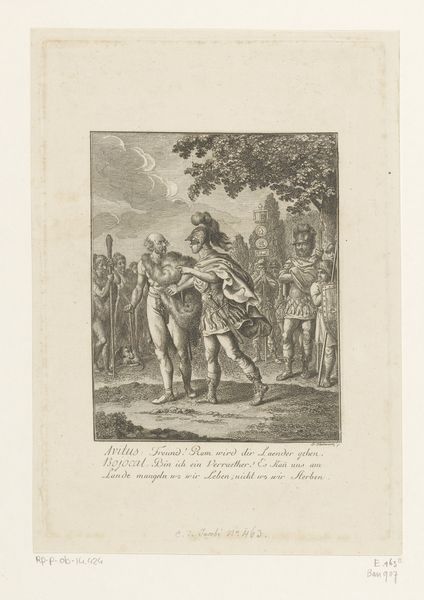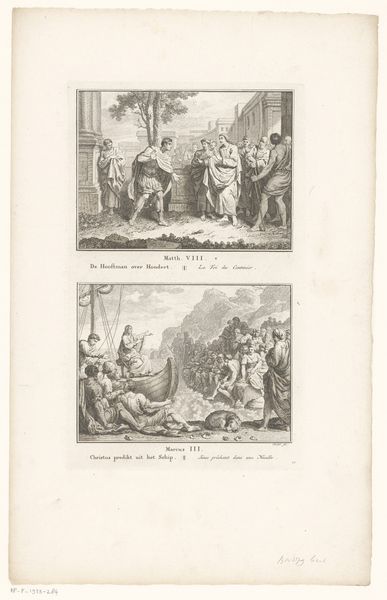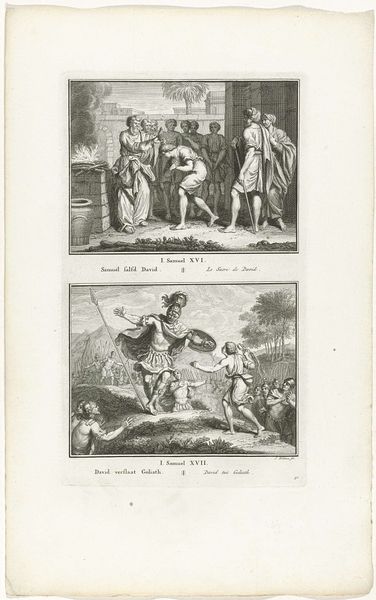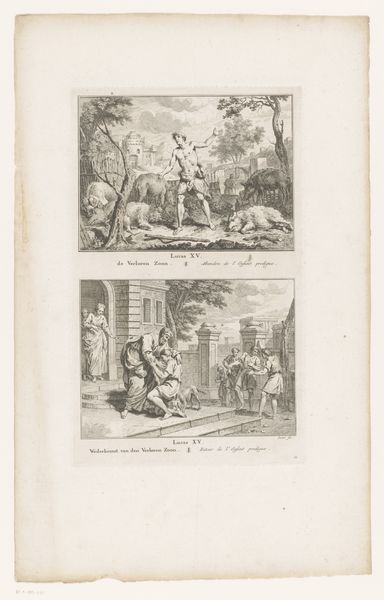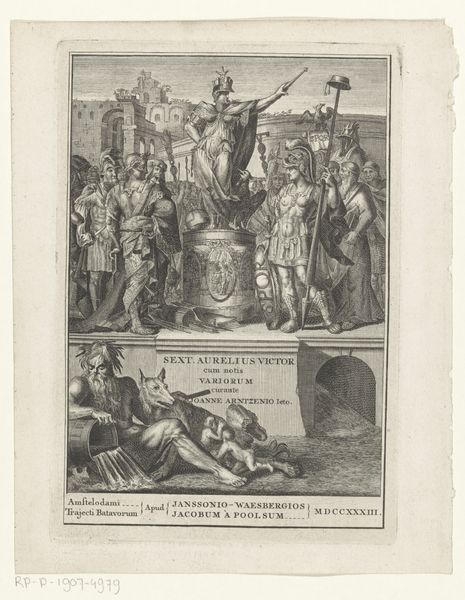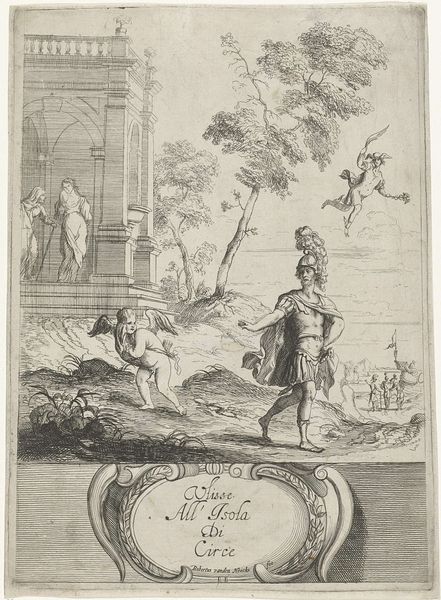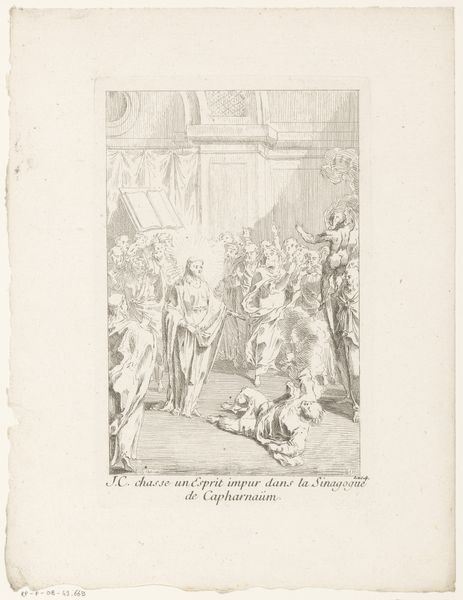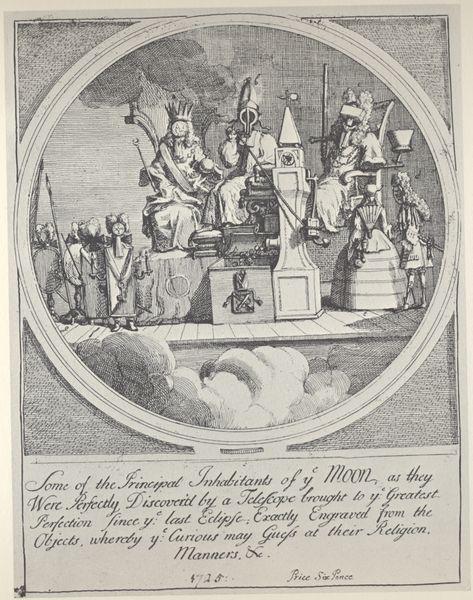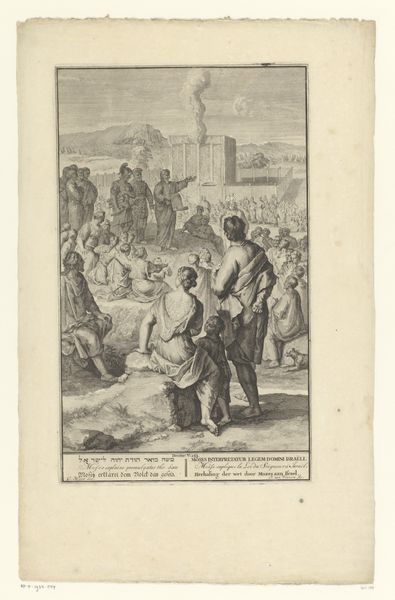
Interieur van een Indiase tempel en processie voor de god Vishnoe 1722
0:00
0:00
bernardpicart
Rijksmuseum
print, engraving
#
narrative-art
#
baroque
# print
#
asian-art
#
old engraving style
#
landscape
#
figuration
#
line
#
history-painting
#
engraving
Dimensions: height 328 mm, width 216 mm
Copyright: Rijks Museum: Open Domain
Curator: This compelling 1722 engraving by Bernard Picart, titled "Interieur van een Indiase tempel en processie voor de god Vishnoe," currently resides at the Rijksmuseum. I'm immediately struck by the stark contrast in texture and the almost clinical precision of the line work. It feels incredibly deliberate. Editor: Indeed. The contrast certainly jumps out. To me, it feels less deliberate and more like a snapshot of colonial gaze, reducing complex rituals to ethnographic data for a European audience. The figures are carefully rendered, but their emotions seem flattened, almost robotic. Curator: From a formal standpoint, the composition divides neatly into two registers, creating a dialogue between the interior and exterior spaces. Look at how the light etches the architectural details of the temple in the upper panel. Note the geometric regularity, particularly of that circular form. Editor: Yes, the division is quite sharp, isn't it? Almost like comparing and contrasting two very different worlds. In the lower panel, we witness what seems like an orchestrated display of power – a procession carrying an elevated figure while commoners prostrate themselves. Who is this intended for? What message is it conveying? Curator: Observe, the artist utilizes precise, cross-hatched lines to define form and depth. Consider the density of lines in the temple's shadowy areas versus the lighter strokes defining the figures in the procession. These nuances structure the image as a kind of comparative study. Editor: A comparative study that subtly reinforces existing power structures. The European viewer is implicitly positioned as the discerning observer, capable of categorizing and judging foreign cultures based on these neatly packaged visual representations. Curator: It's certainly a structured lens through which to examine another culture. Regardless, the artist's technical control in achieving this structured comparative aesthetic is undeniable. Editor: Agreed. Recognizing the aesthetic intention alongside its societal impact is crucial in appreciating the complexities embedded within this historical artifact. Curator: Ultimately, the print displays an intricate blend of artistry and observation, one that begs careful aesthetic consideration. Editor: And a reminder that representation, regardless of intention, always carries power, one we should strive to unpack.
Comments
No comments
Be the first to comment and join the conversation on the ultimate creative platform.
